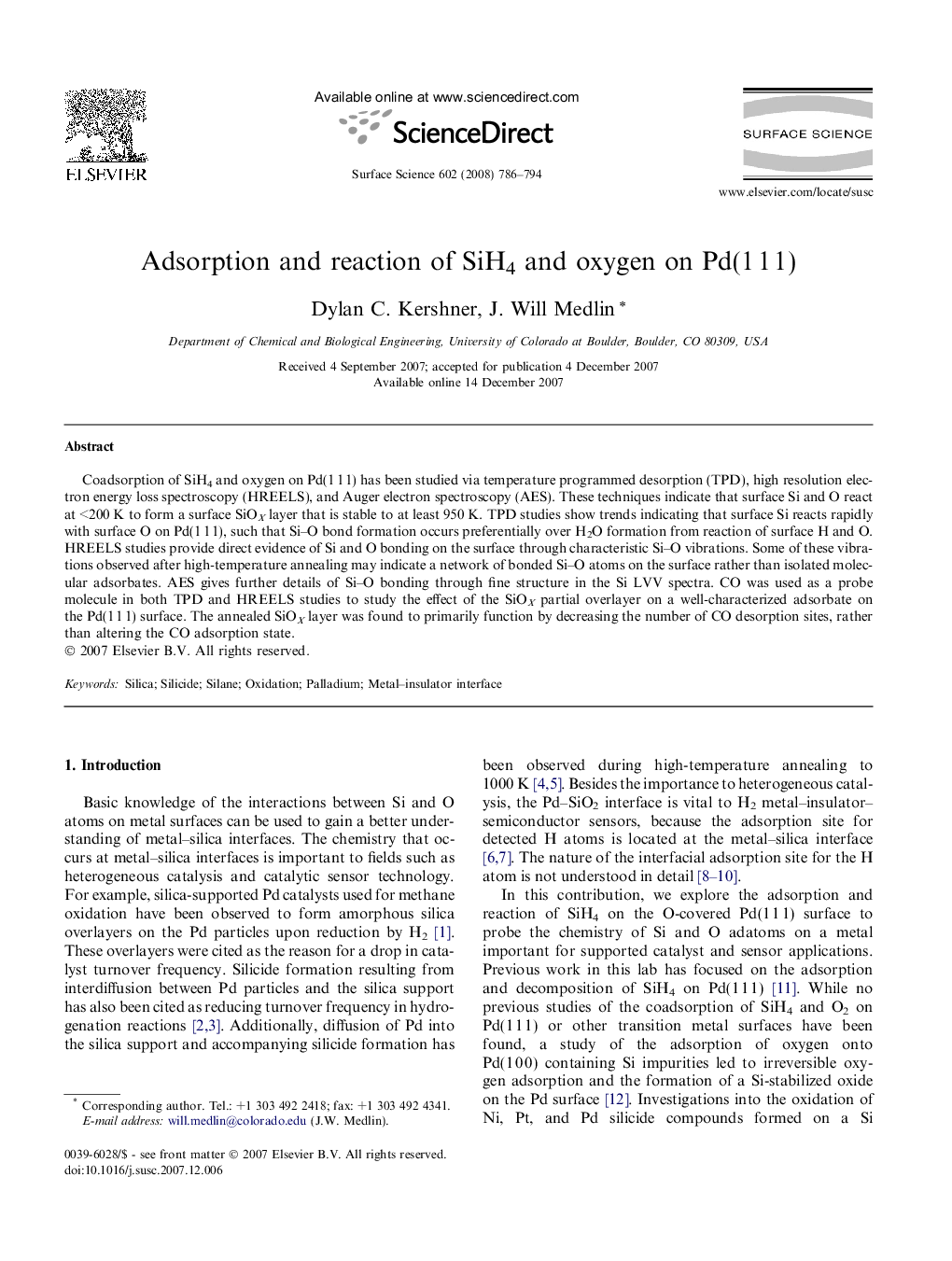| کد مقاله | کد نشریه | سال انتشار | مقاله انگلیسی | نسخه تمام متن |
|---|---|---|---|---|
| 5425453 | 1395856 | 2008 | 9 صفحه PDF | دانلود رایگان |

Coadsorption of SiH4 and oxygen on Pd(1Â 1Â 1) has been studied via temperature programmed desorption (TPD), high resolution electron energy loss spectroscopy (HREELS), and Auger electron spectroscopy (AES). These techniques indicate that surface Si and O react at <200Â K to form a surface SiOX layer that is stable to at least 950Â K. TPD studies show trends indicating that surface Si reacts rapidly with surface O on Pd(1Â 1Â 1), such that Si-O bond formation occurs preferentially over H2O formation from reaction of surface H and O. HREELS studies provide direct evidence of Si and O bonding on the surface through characteristic Si-O vibrations. Some of these vibrations observed after high-temperature annealing may indicate a network of bonded Si-O atoms on the surface rather than isolated molecular adsorbates. AES gives further details of Si-O bonding through fine structure in the Si LVV spectra. CO was used as a probe molecule in both TPD and HREELS studies to study the effect of the SiOX partial overlayer on a well-characterized adsorbate on the Pd(1Â 1Â 1) surface. The annealed SiOX layer was found to primarily function by decreasing the number of CO desorption sites, rather than altering the CO adsorption state.
Journal: Surface Science - Volume 602, Issue 3, 1 February 2008, Pages 786-794